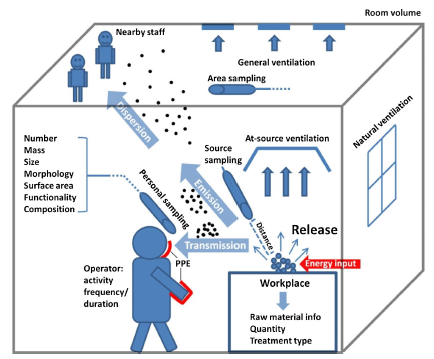Are we be afraid of wastes?
Nanoparticles included in a matrix do not present necessarily a significant risk. On the other hand, the gas, liquid, or solid rejections of "free" particles must be controlled whether they are regular, occasional, or accidental. Due to their properties, the nanoparticles can have an effect on the environment and the human health. These rejections of nanoparticles may interact with the surrounding chemical species, which can also include contaminants. So these nanoparticles could transport by unity of mass important quantities of known contaminants (arsenic, pesticides, volatile hydrocarbons, medicines).
The strong trend to the nanoparticle aggregation limits severely the probability for them to remain under nanometric shape. The risks of dispersion depend mainly on the state of particles.
The probability of aggregation depends:
- in solid phase, the surface properties of each particle,
- in liquid phase, the particle and the liquid (ph and presence of other components properties).

Diagram representing various elements and processes in an occupational exposure scenario [Y. Ding et al., Journal of Hazardous Material (2016)].


